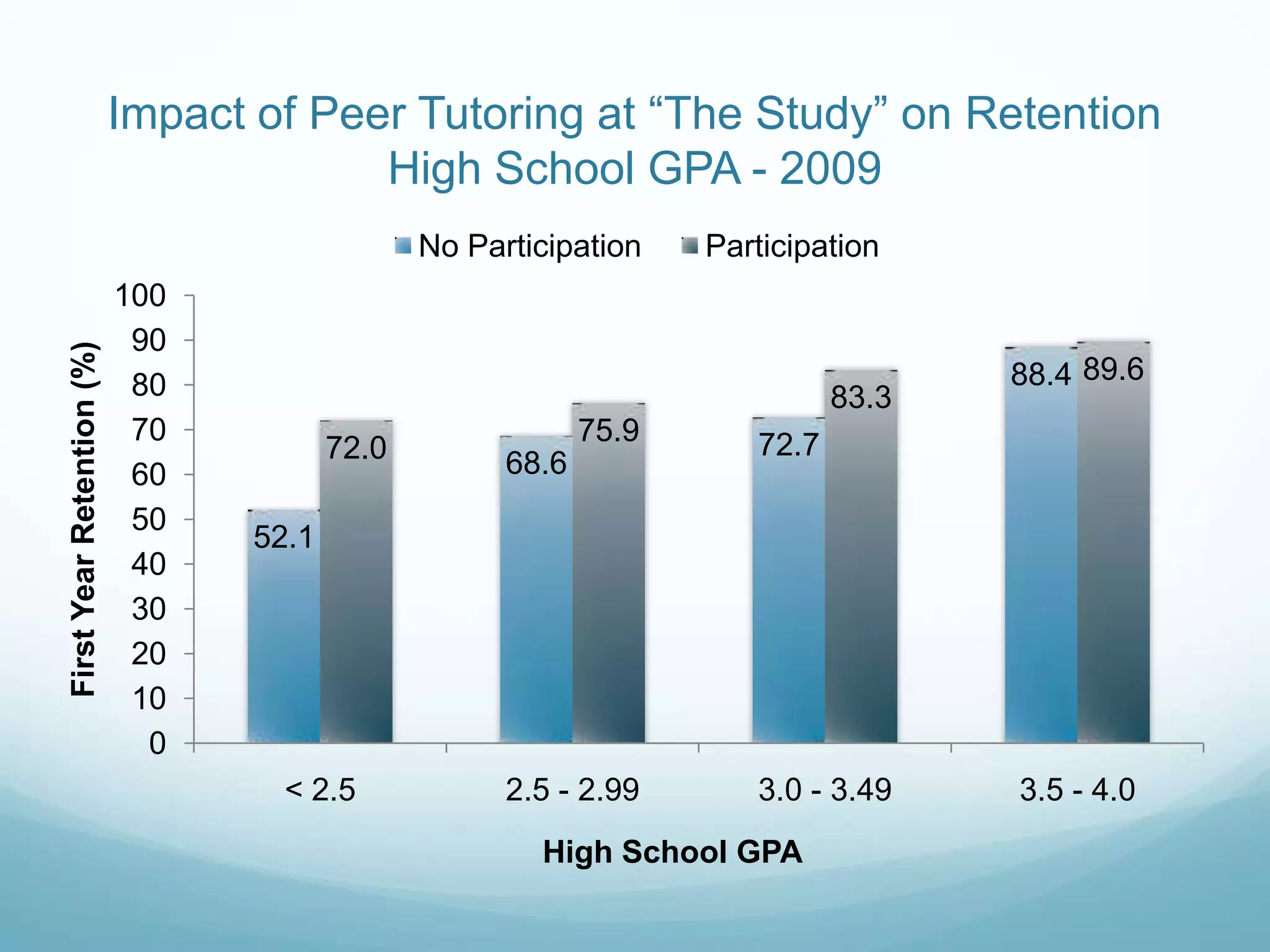The document provides an update on retention and graduation rates at the University of Kentucky, detailing historical trends, institutional goals, and interventions implemented to improve these metrics. Key objectives include increasing first-year retention to 90% and graduation rates to 72% by 2020, alongside specific efforts such as academic enhancements and general education curriculum revisions. It also discusses the financial implications of retention improvements and highlights successful strategies previously employed.




















